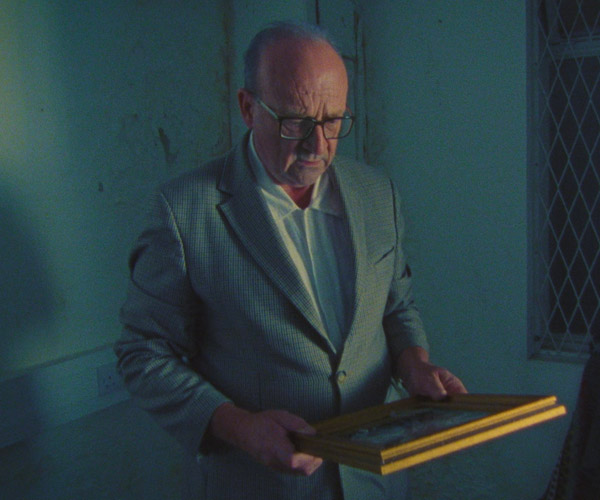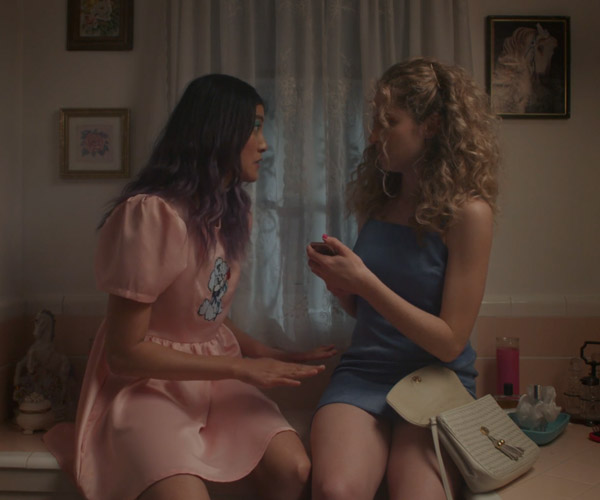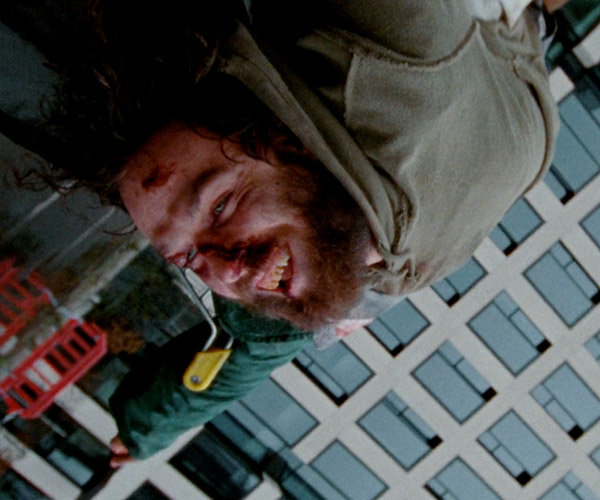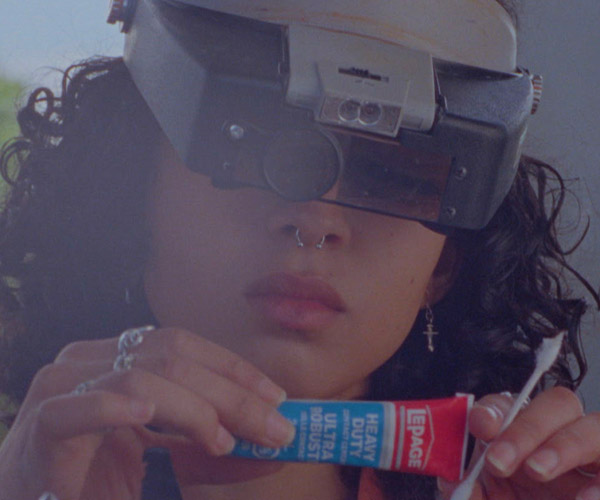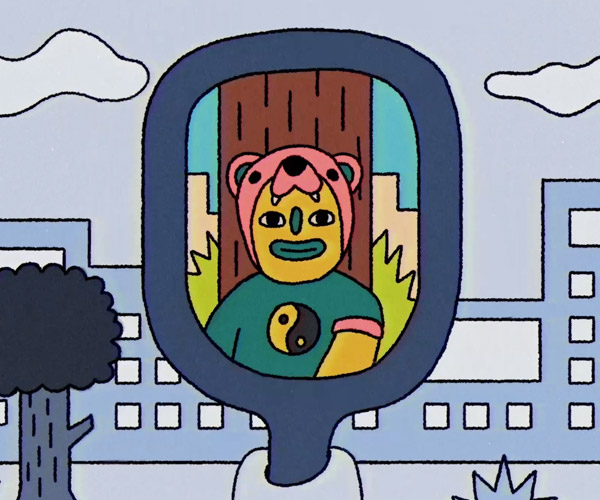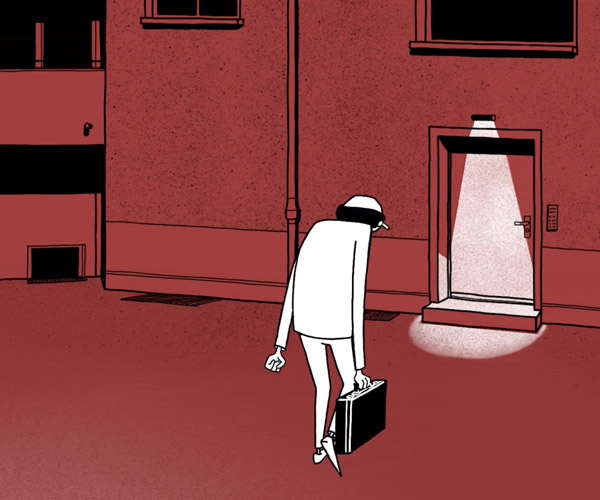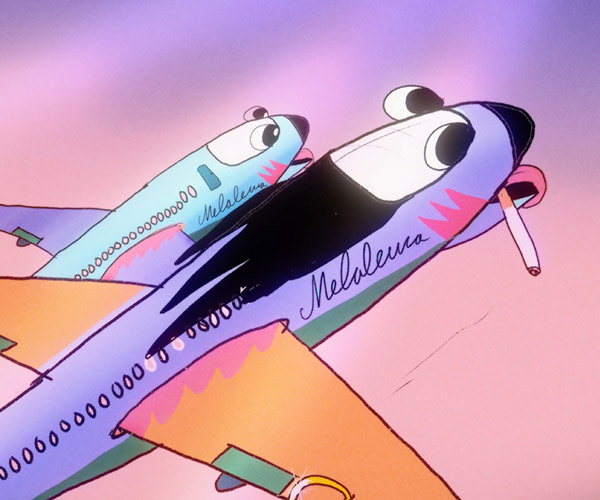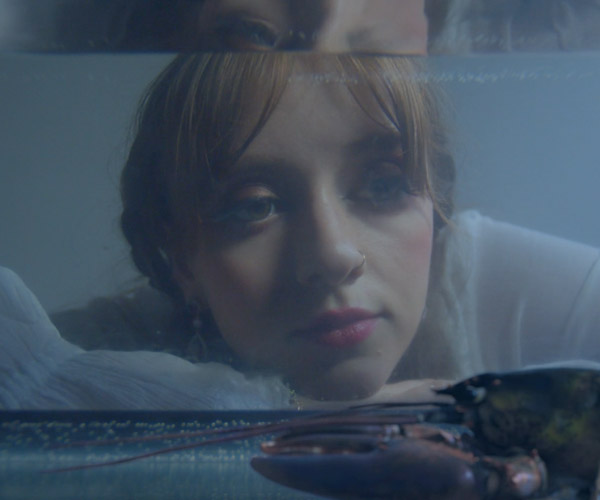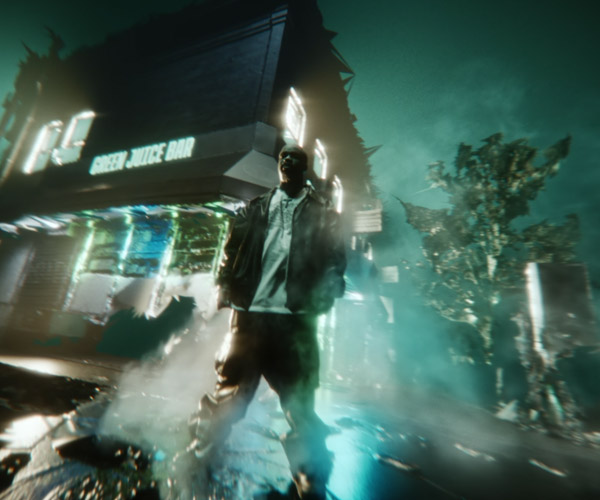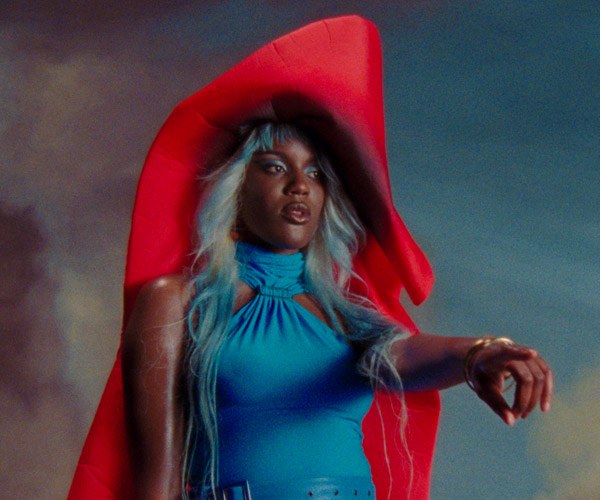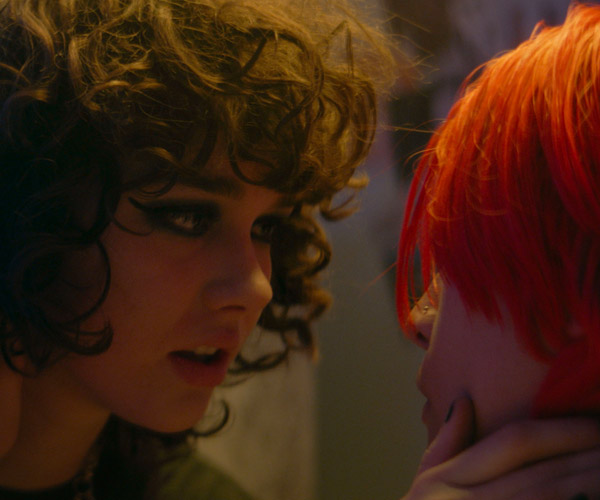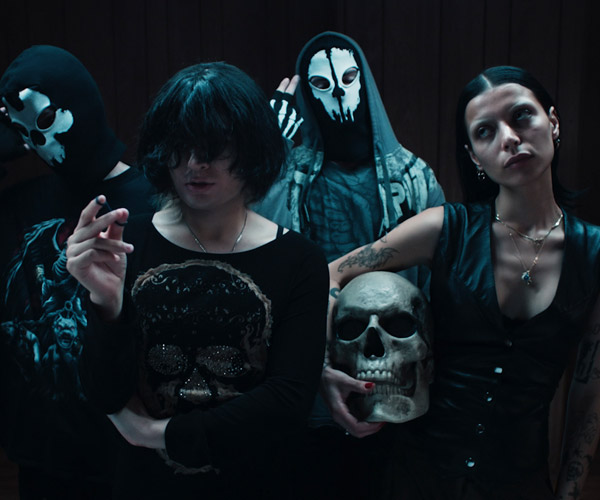Earlier this year we announced the winners for the 2018 Booooooom TV Awards. Paris-based director Arthur Chaumay’s graduation film from Gobelins, l’École de l’Image was our pick for Best Animation of the year! A beautiful yet haunting short about self acceptance, “J’attends la nuit (I Wait for the Night)” features stunning art direction, brilliant writing, and marks a truly exceptional piece of filmmaking from an exciting talent. We caught up with Chaumay to find out a bit more about his sources of inspiration, creative process, and what we can look forward to from him next.
Watch “J’attends la nuit” above, if you haven’t already, and check out our full interview with Arthur Chaumay below!
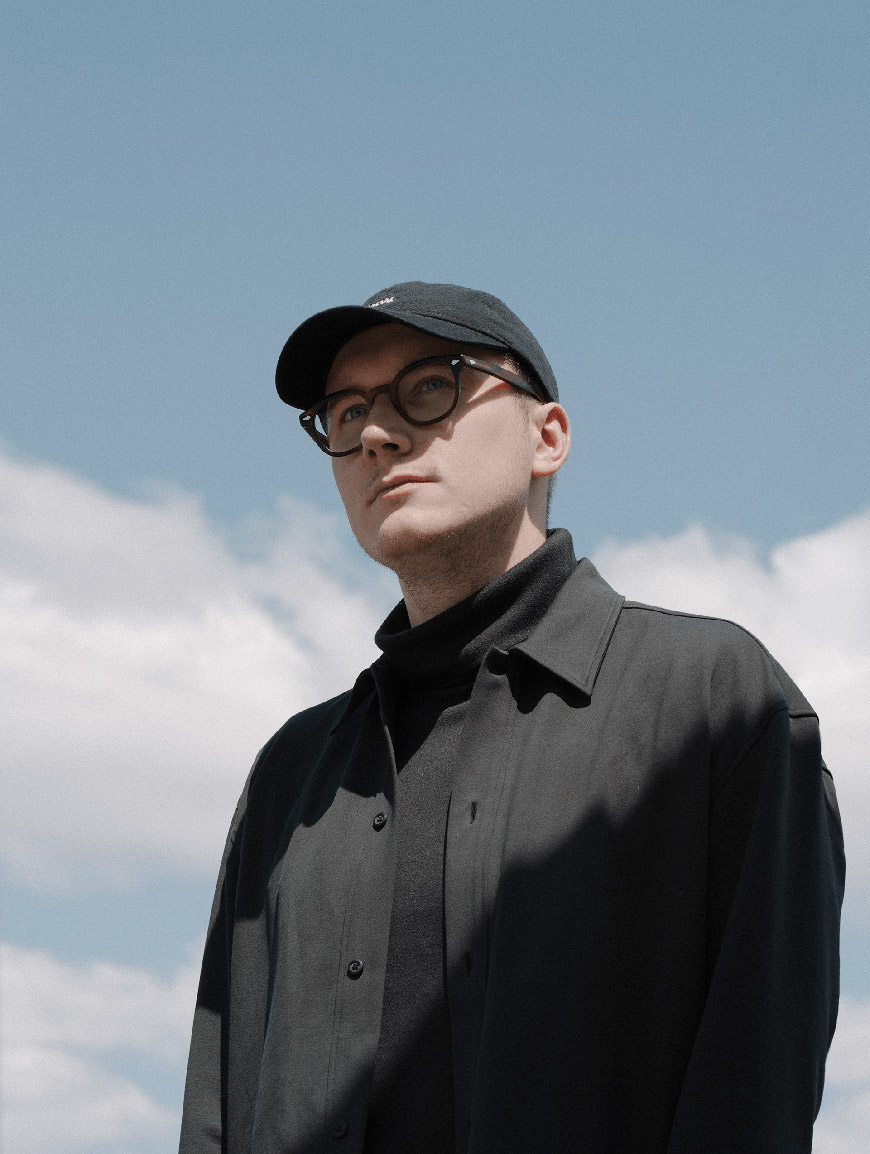
Jeff Hamada: Can you describe where you are right now in as much detail as you can so our readers can imagine it?
Arthur Chaumay: Right now I’m in my tiny apartment in Paris, trying to answer your questions in the best way I can. It’s quite sunny outside from my window, which is always great here. The past days have been pretty grey and rainy, so a bit of sun is welcome. I’m sitting on my sofa, with my computer on my knees, a cup of tea and some music in the background. I’m surrounded by my plants, the biggest one is a monstera on a little side table to my right, facing the window. The leaves are heading towards the sun which is drawing large squares of light on the floor. It’s quite peaceful I must say.
JH: What were you like as a kid, what kinds of things were you into?
AC: I remember being a very quiet and calm kid, but at times I could get very upset. I was good at school, not because of my parents but mostly because of me, as a personal challenge in a way. I was always in my own world, writing a lot of fantasy stories with one of my friends at the time. We were always exchanging and reading our work to each other. I remember that we would spend entire afternoons to write and create weird worlds on paper, debating on which idea or character was the better.
Nature was also a big thing for me. I lived in the deep countryside of France in Burgundy, so woods, fields, rivers, lakes were a part of my daily landscape. Running through the forest, playing with my brother and sister and building cabins and tiny wood structures were kind of my thing. I was always coming home covered in mud. I dressed up a lot too… My main costume was a weird wood warrior with long capes that were too big for me. I also had lots of different wood branches which I pretended to be my weapons. To make it short, I was a dreamer.
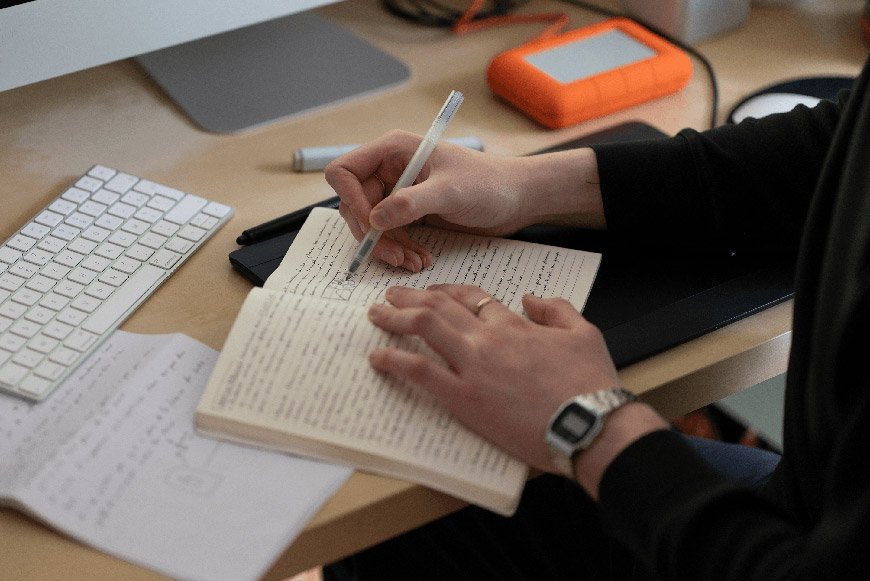
JH: What’s changed since then? How are you the same and how are you different.
AC: Hopefully I don’t dress like that in the streets now… But I think I stayed pretty much the same in a lot of areas. I’m still a dreamer and I’m still amazed by a lot of daily life things. A ray of sunlight on a wall, through trees, the sunset, water on the floor, a single flower standing in a grass field, crackles on the soil ground during a hot day of summer… Those kind of things. I’m still writing stories, and still get upset for sometimes very useless stuff.
I accept myself much more now than when I was in middle school. I’m more comfortable with a lot of areas in my personal and artistic life. I have goals, I know what I want for my future, where I wanna be as an artist. But there are still some blurry spots that I’m still trying to figure out. But I guess that’s everybody’s case.
JH: Is there a particular animated film or scene from a film that has really stuck to you over the years?
AC: I could go on and on about the films that marked me as I was growing up, but I will stick to scenes. Both of them kind of followed me during my childhood.
The first one was the defeat of the Dark Lord in The Black Cauldron. It was the first villain who truly terrified me as a kid. And the scene itself of him getting swallowed by the cauldron with his skin melting and getting detached from his bones. Truly terrifying. I ended up watching the film many times back then. I miss the dark Disney days, even though the film isn’t really good, they weren’t afraid to get a little dirty with what they were showing on screen.
The other one was a scene from Kung-Fu Hustle, directed by Stephen Chow, which got me in tears. I think I was around 9 or 10 at the time. It’s the flashback scene during the protagonist childhood. He was trying to help a little mute girl from a bunch of boys who were harassing her. He ended up being beaten to the ground for it. The girl offers him a lollipop afterwards but he throws it away and runs. Kind of cheesy but the funny thing about it is that I was never able to recover the title of the film afterwards. Until maybe 3 years ago when I watched it again and realized that this was the scene that got stuck in my head. And I actually ended up enjoying the film a lot in the end. I think it’s definitely one of my favourites now.
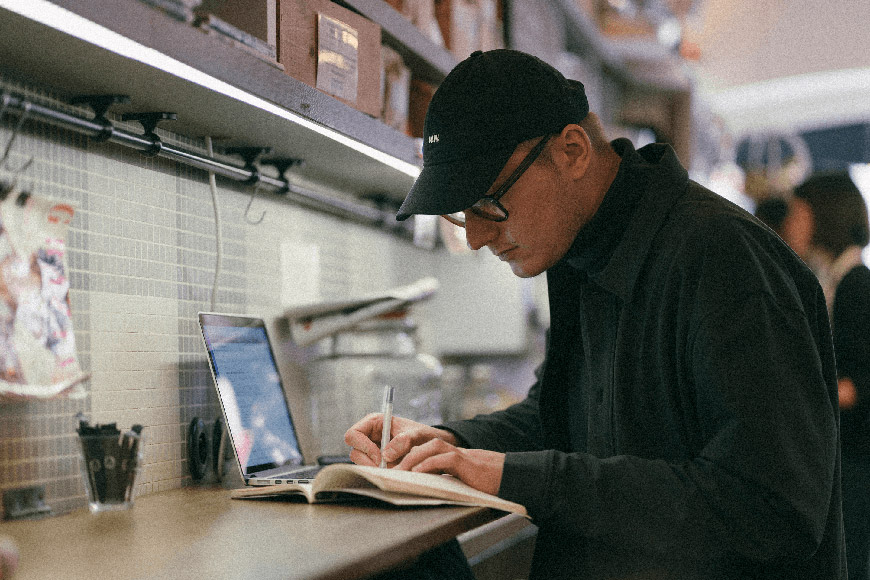
JH: What was the very first animation you created about?
AC: I was 16, second year in high school at the time. We had a group stop-motion assignment for a few weeks in art class. So I ended up making a short with a classmate about a scientist who’s little experiment comes alive and makes a mess in his lab while he’s away. It was a lot of fun but we didn’t know what we were doing the whole time. We wanted the story to reflect the mess that we were going through while making it.
JH: Can you talk a bit about the process of finding and developing your own creative voice? Did school help with that?
AC: Finding my own creative voice is pretty much still something that I’m working on today. It’s a never ending chase. I may know what I want to achieve, but every project opens up different opportunities of trying and experimenting. It’s a constant quest… But I know what I like and what I want to achieve with my work, so I guess that’s a start. I can definitely describe my creative approach more easily than a few years ago. I guess finding your own path first comes with finding what you like experiencing as an audience. What type of stories drives you? What are the things you think are missing in what you see nowadays?
School kind of helps with getting you to find a voice. It’s like a tool you use to discover more elements and add them to your own skillset. At least Gobelins was more like that, on the technical side of things… Because it’s a technical school first. But it was what I was looking for when going there, to get to learn more of the craft and the technique. Something that was definitely motivating to push myself artistically was the creative emulation happening with all my classmates. Making projects with them definitely helped on knowing what I wanted to do and more importantly what I didn’t.
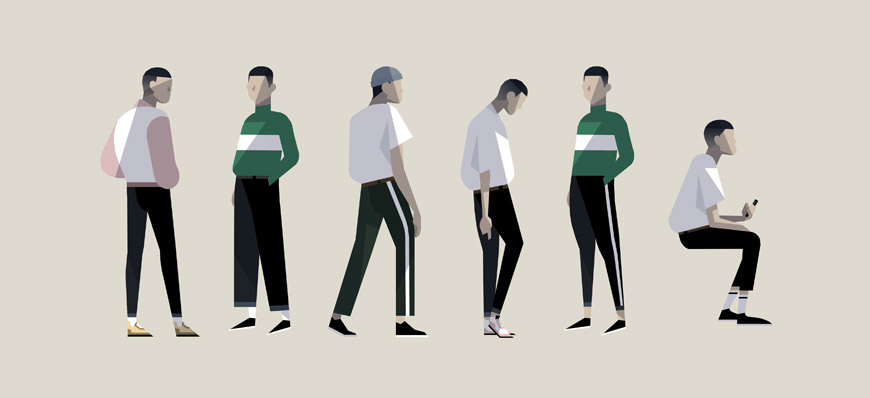
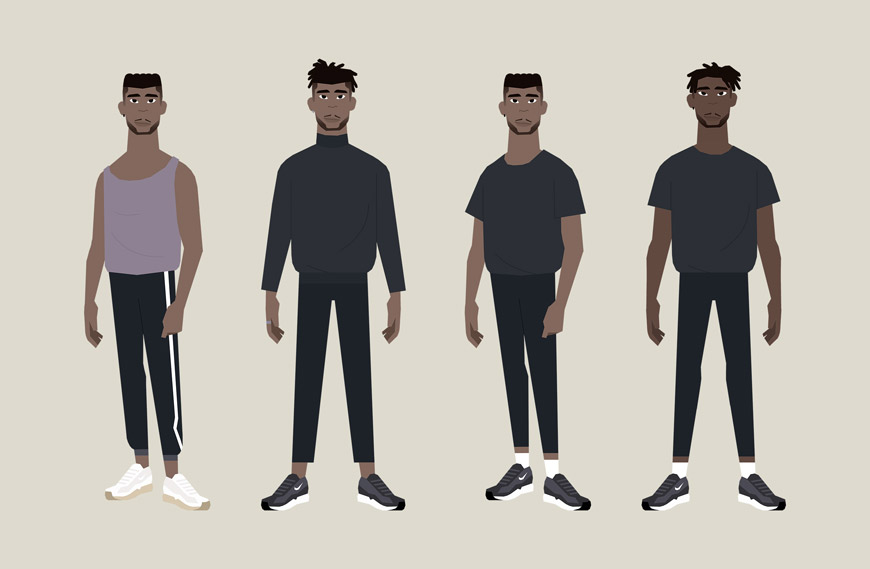
JH: How would you describe your aesthetic now?
AC: Live action cinema is my first love. I tend to blend live action techniques into my animation/graphic style. So I will say it falls somewhere in between, when the simplicity and stylized approach of animation is mixed with a very photographic look and feel as well as a realistic color palette. I’m doing a bit of live action on the side, which helps me feed my animation process and style in a way… By going back and forth between both worlds. I’m trying to restrict myself by having a minimalistic approach in what I show inside my images, playing with what’s visible or not, suggesting a presence or an absence, an action. I love suggestion, it’s a powerful tool to interact with your audience, putting them in an active state of mind where they have to think about what they are seeing. It’s omnipresent in my graduation film, “J’attends la nuit”. It’s the core of the short.
JH: What made you want to make “J’attends la nuit”? Where did the idea start and how did it evolve?
AC: “J’attends la nuit” is my graduation film so I was in a way forced to do a film even if I didn’t wanted to. But since I knew I was going to make it by myself, a lot of the themes where already written down in my notebooks. I remember rewatching It Follows earlier in 2017 when the perspective of making a short started to get into my head. I immediately knew afterwards that I wanted to bring horror elements into a more intimate story. The opening sequence of It Follows just really set up the baseline for what I was going for — A character facing a force he can’t explain on the shores of a lake at night. So I started writing a first draft of the story back in August 2017, before school began. It had all the elements that were going to become what the film ended up being, but lost in a lot of useless story bits. It was first dealing with a bigger family affair as well as more explicit and violent stuff.
From there as I was rewriting the script it became clearer that the force that was attacking the protagonist was his own self. Naturally then the date aspect arrived to become part of the whole canvas. I wanted to have another character trying to help Simon (the protagonist) face his own fears, or at least confront them. Everything started to make sense in my mind at that moment… I think it was in October 2017. I wasn’t counting how much I rewrote the whole thing. All the pieces were connecting to each other, and I wanted to make sure that everything was at its place. That’s also at the same time that I removed a lot of what was happening and chose to play with the notion of suggestion by not showing many of the key events in the film. Trying to build a puzzle to interpret. So people could have a really different vision of what they think happened. It made clear sense to me to put this that way, since Simon is trying to piece together what he is in the film. It kind of echoes that notion.
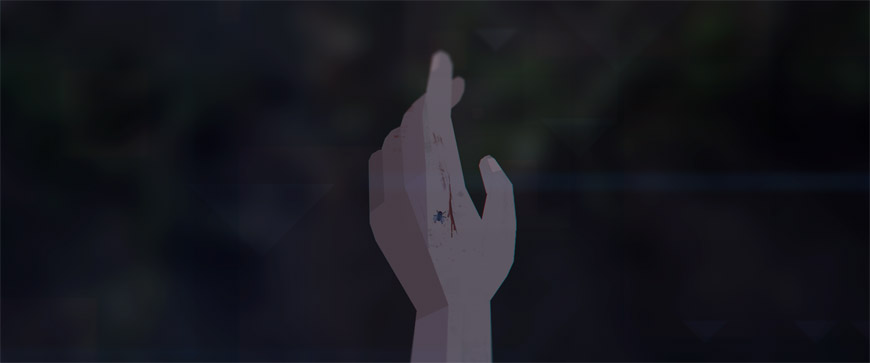
JH: What were some of the visual inspirations for the film?
AC: It Follows played a big part in shaping the film for the visuals too. I loved how every corner of the frame is used to make you feel uncomfortable. It’s very rich and dense and I wanted to get that same richness in the imagery in “J’attends la nuit”. I can mention cinematographers like Robbie Ryan (his work on Patagonia especially), Frederick Elmes, Michael McDonough and of course Emmanuel Lubezski and Christopher Doyle. They are artists that I was always watching whenever I needed inspiration to craft the visual world of the film.
Besides It Follows, the other movie that really had a huge impact on the visuals for “J’attends la nuit” was Woodshock (directed by Kate and Laura Mulleavy). The way the cinematography plays with reflections, textures and deformations to reflect the psych of the character played by Kirsten Dunst helped me. Especially on how to build a visual atmosphere that would support my protagonist’s own transformation. I can also mention music videos, short films and videos like Basalt Crush (directed by Louise Ernandez), Tropical Island (directed by Jeppe Kolstrup), Marina and Adrienne (directed by Lucy Campbell) and Fata Morgana (directed by Amelie Wen).
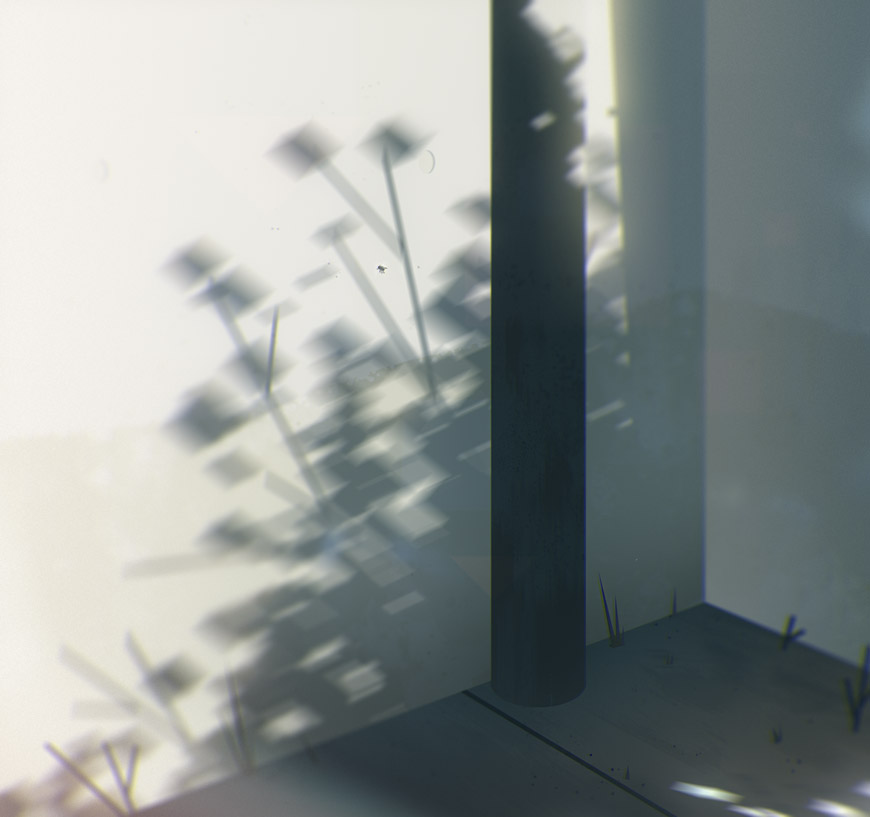
JH: Who are some other young creators inspiring you on Instagram these days? Can you give me your top 5 right now?
AC: I’m pretty new to Instagram (I started my account in September last year) so I’m still discovering a lot of amazing creative people on it everyday. Without putting any order to the list, I think I would start with Nik Antonio (@nik80s). I love the sensibility he puts into all of his portraits, everything feels soft and warm. Romain Laprade (@romainlaprade) and Pia Riverola (@piariverola) are also photographers I tend to look at a lot whenever I wanna get inspired. Then I will end with Lloyd Lee Choi (@lloydleechoi) and Louise Ernandez (@louisernandez), two directors I’m a big fan of. They’re so many talented people I can continue this list with!
JH: Do you feel like what you’re doing now is what you were born to do?
AC: Ask me again in five or ten years! I feel like I’m definitely going there, I got a very small taste of it while making my graduation film last year. Now I want to keep walking on that road. The coming two years will be very important to get to the life I want to live as an artist. It’s a huge mountain, but I’m trying to climb it with very sturdy steps.
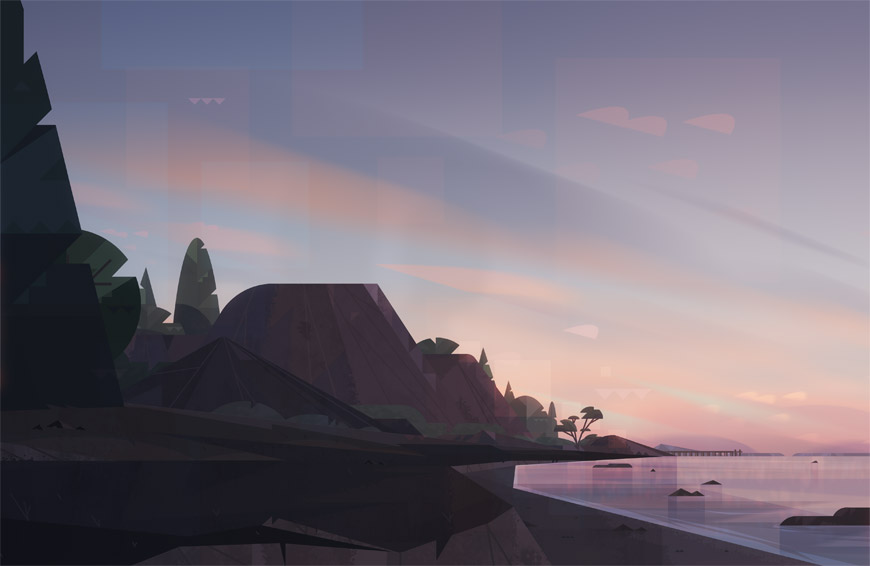
JH: What’s one thing you want to accomplish this next year? And what about in your lifetime?
AC: I want to move to live action and direct a short film which I’m currently writing. It’s surely gonna take more than the next year to get to it, but that’s definitely where I’m heading now. We’ll see. I also want to direct another animation project before moving to my short. I guess that leads to the lifetime part of the question. Getting to write and direct a long feature would be the dream. Being a director who works both in live action in animation, switching medium whenever the project needs it and developing an aesthetic that makes the two worlds live with each other. I don’t necessarily want to mix animation and live action together, but creating an identity that works with both. That’s very ambitious, but I guess it’s good to have an idea of where you want things to go. It gives a purpose to the work I’m doing in the present, and helps me navigate to get somewhere close to my lifetime dreams, I hope.
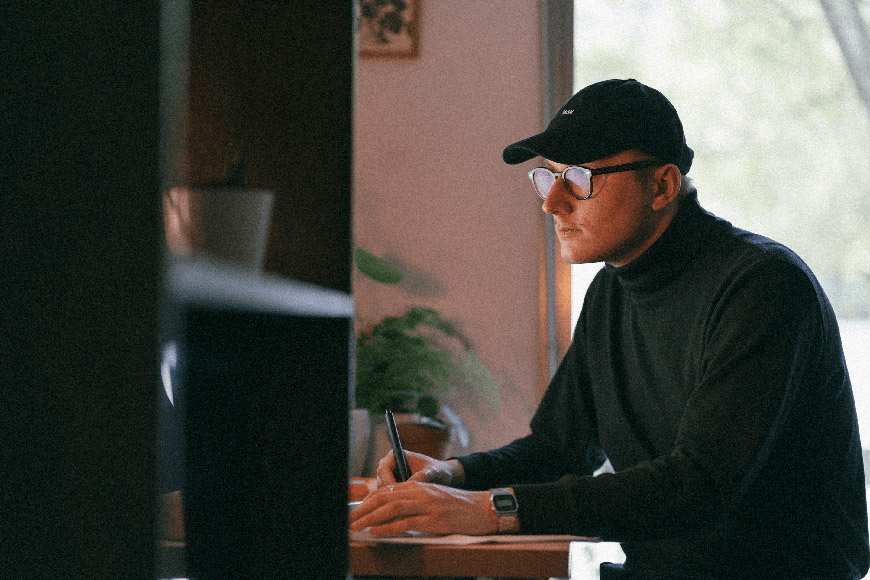



 Share
Share
 Tweet
Tweet
 Email
Email
